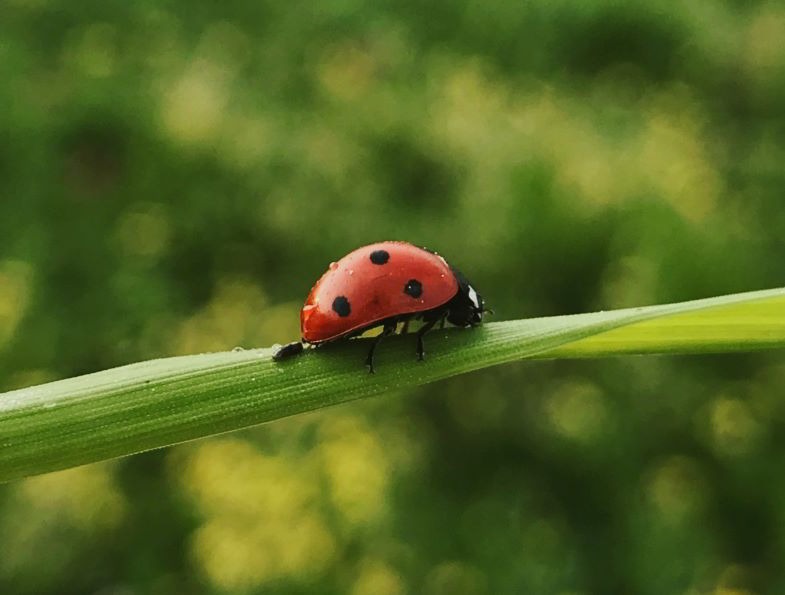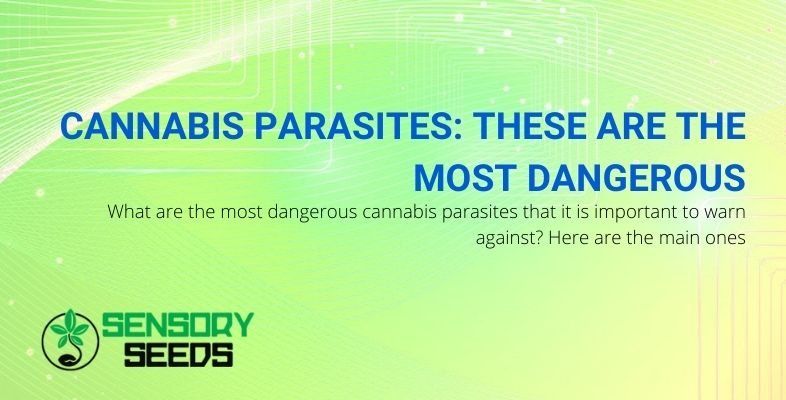Published on: 12/08/2021
What are the most dangerous cannabis parasites that it is important to warn against? Here are the main ones
From the moment you plant cannabis seeds until the flowering and harvesting period, as well as making sure that the plants are growing regularly and have all the necessary nutrition, it is very important to monitor any parasitic attacks.
Cannabis parasites, in fact, are many, and some in particular are very harmful; this is why it is important to know how to recognize and eradicate them before it is too late.
In this article, we will talk about the most common and most dangerous pests for marijuana plants, their effects and the remedies adopted by canapicultors to prevent their appearance or to defeat them.


Aphids and hemp: beware of dangerous lice
The first cannabis pests we want to talk about are a species that often puts even the most experienced canapicultors in difficulty: we are talking about aphids.
Aphids, or plant lice, are small insects that can seriously endanger hemp plants.
To avoid irreparably compromising cannabis plantations, canapicultors must keep under control the possible appearance of this small parasite as soon as they are planting of marijuana seeds.
Why?
Because these parasitic insects feed on the sap of plants, and reproduce with frightening speed!
This means that if even two or three specimens were to appear on a plantation, they would not take so long to become hundreds, or even thousands.
But how do you recognize aphids?
And what kind of damage can they inflict on marijuana plants?
Aphids are very small and are characterized by a stocky, almost roundish body, tapering in the front.
As for the color, some specimens are white, others brown, still others of a dark gray (almost black). But since there are about four thousand subspecies, the variables can be really numerous.
Generally however, aphids are recognizable because they are located on the dorsal page of the leaves (the part below) at the veins: it is precisely from here that they suck the sap of the plant.
Of course, when the infestation by these pests becomes more serious, aphids can also walk along the stems, but it is important not to get to this point.
What is the effect of aphid infestation?
The first visible symptoms on the plant are the curling of the leaves and a few yellow specks.
Subsequently, if the plant is heavily infested, the leaves turn yellow more and more, until they wither and cause the plant to stop growing.
If you thought it was all here, it will surprise you to know that these are not the only damages that aphids cause.
These parasites can also serve as a transport vehicle for viruses and bacteria, the cause of other diseases. In addition, their excrement, which consists of a sugary substance called honeydew, are very inviting for ants (other animals that, if redundant, can represent a problem for plants).
Read also: The role of cannabis terpenes in the entourage effect
Leaf miner insects: the dangerous builders of tunnels
Leaf miners can also pose a serious danger to hemp plantations, both indoors and outdoors.
The parasites we are talking about are basically larvae of lepidoptera, flies and beetles, usually coloured white or green and about 2 or 3 millimeters long.
What do they cause to the cannabis plant?
Miner insects dig into the leaves of real tunnels (called mines), and inside them they lay eggs there.
Once the eggs hatch, the newborn specimens also begin to feed, and so the reproduction cycle continues.
This phenomenon causes the leaves to dry out, causing them to fall, and in general causes various aesthetic damages (the path of the tunnels is visible from the outside).
In addition, the effect of leaf miners triggers a reaction of the plant, which begins to produce a sweetish substance attractive to ants and flies.
Unfortunately, even the larvae – just like the aphids, of which we have spoken above – affect indifferently any species of hemp plant, whether it derives from autoflowering seeds, or is born from feminized seeds, or of any other type …
In short, these small larvae can be a real disaster for plantations!
Mushroom midges: small pests that cause very large damage
Mushroom midges are parasites of 2-3 millimeters that have the appearance of small flies, or vaguely resembling mosquitoes. They can cause various damage to cannabis plants (even during the larval phase) both in the area of the stems and the roots.
Often these pests become a problem for plantings when watering is excessive: to grow, in fact, they need very moist soil.
What do mushroom midges cause to marijuana plants?
These unwelcome little hosts make their way from the earth to the roots until they reach the stem of the plants, and can attack even the youngest specimens born from any type of seed (fast seeds, feminized Bsf seeds, etc.).
In addition to greatly weakening the plants and slowing down their growth, the action of the mushroom midges — but also that of the larvae, which have a transparent white appearance with a black head — also carries a series of very dangerous bacteria and viruses inside the cannabis plants.
Unfortunately, the damage of these small insects can be enormous, especially if you think that the female lays from 50 to 200 eggs at a time, which hatch in just 2 or 3 days.


Defeating parasites and preventing their appearance: here are the best strategies
The ones we have just talked about are three of the most dangerous and common parasites to cannabis, but it is also a must to mention the mealybug, the red spider and the less known, but definitely fearsome, rust of hemp (a spider mite).
To limit the damage the invasions of these parasites can cause, the best tactic is certainly to play in advance, adequately dosing the humidity of the rooms, paying attention to the right levels of irrigation and taking care of the hygiene of the environments and equipment.
When parasites take even the most experienced canapiculers by surprise, however, a solution strategy must be implemented.
In the world of cannabis cultivation, using chemical pesticides is definitely not recommended (especially during flowering), because they could negatively alter the aromas of the crop.
Better to opt for a natural insecticide for hemp, taking care to use it at the first signs of infestation.
In this sense, some canapicultors choose to use ready-made natural compounds, while others prefer to make a DIY hemp pesticide using essential oils (such as neem oil, lemon essential oil, etc…).
Another useful strategy to keep marijuana plants healthy is to introduce some species of predatory insects.
Among the most widespread we can mention the common ladybug, the Thomisidae spiders (or crab spiders) and the Chrysoperla carnea.
Read also: What is CBG and how it is present in cannabis plants
To conclude
Now you know the main enemy pests of cannabis plants.
Keeping an eye on these and many other small dangers from the sowing period is very important to be able to get to the harvest stage in the best conditions.
Fortunately, remedies — even natural ones — exist, but because of the speed with which most parasites reproduce, it is easy to lose control of the situation.
The secret is to be very careful, examine the plants day after day, and always be ready to adopt the most suitable solution.
After this in-depth analysis for informational purposes only, reminding that in the UK growing cannabis is not allowed, we invite you to visit our Sensory Seeds online store.
In our shop, you can find the best Bsf cannabis seed varieties to complete your collection.
Visit our online catalogue today: we are waiting for you!









